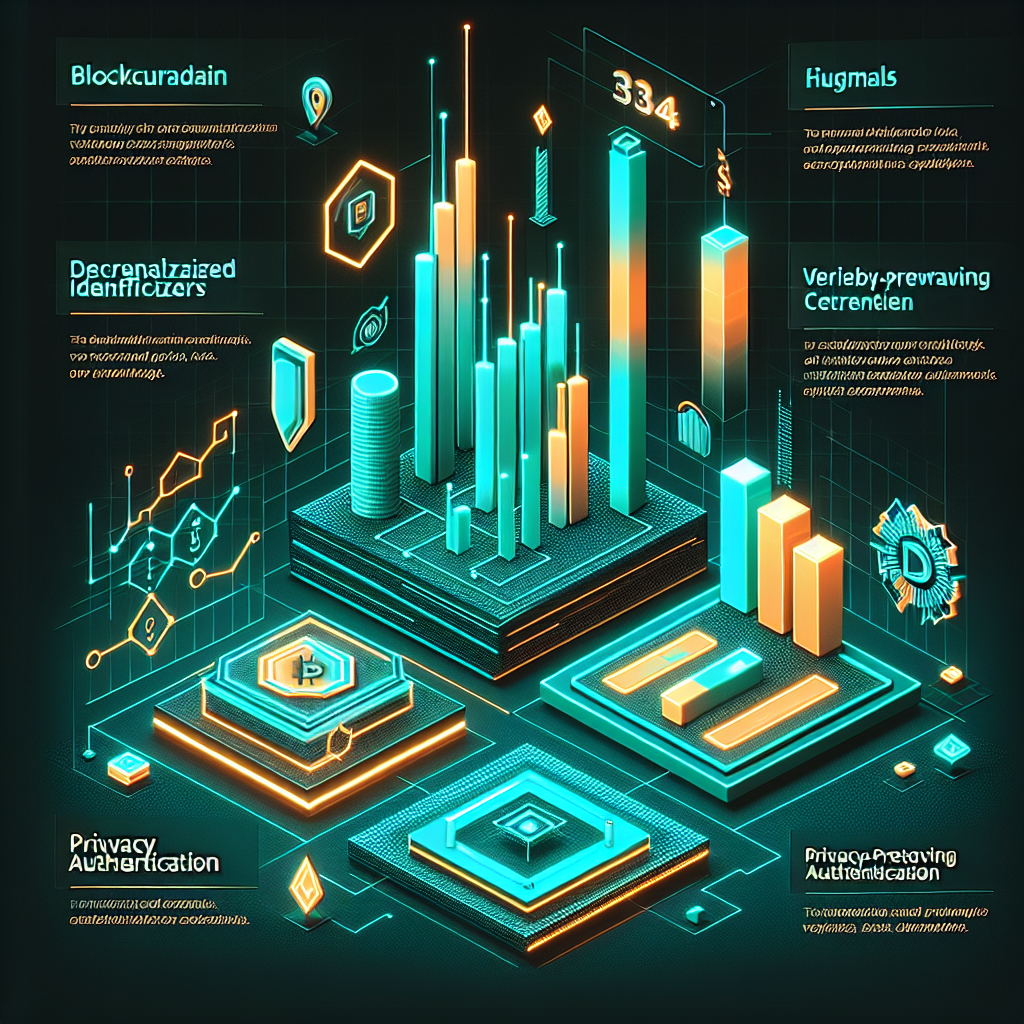Blockchain Digital Identity Fundamentals: Decentralized Identifiers, Verifiable Credentials, and Privacy-Preserving Authentication

Introduction to Blockchain Digital Identity
Digital identity sits at the heart of every online interaction, from logging in to a favorite streaming service to proving citizenship at an e-government portal. Traditional identity systems rely on centralized databases that are vulnerable to breaches, single points of failure, and costly third-party verification processes. Blockchain technology promises to flip this model by enabling individuals to control, present, and revoke their own identity data without surrendering it to siloed intermediaries. This article explores the fundamentals of blockchain digital identity, focusing on decentralized identifiers, verifiable credentials, and privacy-preserving authentication methods that collectively shape a new era of secure, user-centric identity management.
What Are Decentralized Identifiers (DIDs)?
Decentralized Identifiers, or DIDs, are globally unique URIs that allow a subject—person, device, or organization—to be identified without depending on a central registry, certificate authority, or directory service. A DID consists of three parts: the scheme (did), a method specification (such as ebsi or ion), and a method-specific identifier. When anchored to a blockchain or distributed ledger, a DID document can be discovered that contains public keys, service endpoints, and routing metadata. Because DID documents are cryptographically signed, the controller can rotate keys, update endpoints, and prove control without any gatekeepers. This self-sovereign model eliminates traditional username-password pairs and establishes a trust foundation that is vendor-agnostic and interoperable across ecosystems.
Understanding Verifiable Credentials
While a DID asserts who you are, a verifiable credential (VC) states what you are entitled to claim. The W3C Verifiable Credentials Data Model defines a tamper-evident digital statement issued by an authority—such as a university, bank, or government agency—and cryptographically bound to the holder’s DID. A VC contains claims (e.g., date of birth, degree earned), metadata, and a digital signature from the issuer. Holders store credentials in a digital wallet and can present them selectively to verifiers. Thanks to cryptographic safeguards, verifiers can check the issuer’s signature and confirm that data remain unaltered, all without ever contacting the issuer again. This drastically reduces friction in KYC, onboarding, and compliance workflows while enhancing trust and auditability.
Privacy-Preserving Authentication Techniques
Privacy is central to blockchain identity frameworks. Zero-knowledge proofs (ZKPs) allow a user to prove possession of certain attributes—such as being over 18—without disclosing the underlying data, like an actual birthdate. Another approach, selective disclosure, lets the holder reveal only the specific claims requested by a verifier, not the entire credential. Pairwise-pseudonymous DIDs further protect users by generating a unique identifier for each relationship, thwarting correlation attacks across services. Combined with on-device key management and encrypted storage, these techniques empower individuals to authenticate securely while minimizing data exposure and surveillance risks.
Benefits and Use Cases
Blockchain-based identity systems deliver multiple advantages over legacy models. For individuals, they provide convenience, sovereignty, and control, enabling users to manage a portable identity wallet that works globally. Enterprises gain streamlined onboarding, reduced compliance costs, and protection against fraud. Governments can issue eID and public-sector credentials that citizens carry across borders. Practical use cases include reusable KYC in financial services, digital diplomas in education, age verification for online gaming, supply-chain credentials for product provenance, and decentralized access control in the Internet of Things. In each scenario, DIDs and VCs remove intermediaries, accelerate verification, and create auditable, tamper-proof trails.
Challenges and Considerations
Despite its promise, blockchain digital identity faces technical, regulatory, and adoption hurdles. Standards are still evolving, and not all DID methods offer the same scalability or cost profiles. Key management remains a user-experience challenge: if a private key is lost, so is control over the associated identity. Regulators need to reconcile data protection laws like GDPR with decentralized storage models, especially concerning the right to be forgotten. Interoperability across chains and legacy systems, governance of permissioned ledgers, and equitable access for those lacking modern devices must also be addressed to prevent new forms of exclusion or centralization.
Future Outlook
Momentum behind decentralized identity is accelerating. Major cloud providers, telecommunications firms, and public authorities are piloting DID and VC integrations to modernize authentication flows. Layer-2 scalability solutions, such as rollups and sidechains, promise cheaper, faster anchor points for DID documents, while advances in zero-knowledge cryptography will make privacy proofs more efficient on resource-constrained devices. The convergence of decentralized identity with emerging technologies—like Web3 wallets, smart contracts, and artificial intelligence—will spawn new business models centered on user consent and data monetization. As standards mature, we can expect credential interoperability across borders, fostering a truly global digital identity layer.
Conclusion
Blockchain digital identity reframes trust by giving individuals the keys—literally and figuratively—to their personal data. Through decentralized identifiers, verifiable credentials, and privacy-preserving authentication techniques, users can prove who they are and what they are entitled to without surrendering control to central authorities. Although challenges remain in governance, interoperability, and user experience, the trajectory toward self-sovereign identity is clear. Organizations that adopt these principles today will be better positioned to comply with evolving regulations, protect customer privacy, and unlock frictionless digital interactions in the coming decade.